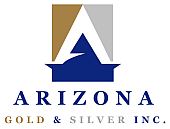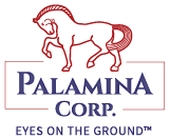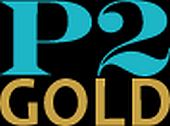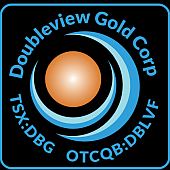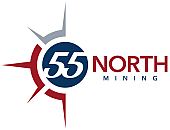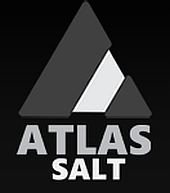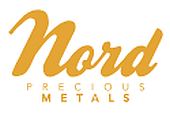 Golden Cariboo Resources Ltd. (CSE: GCC) Intersects 172.6 m (566.3 ft) of 0.43 g/t gold Near Surface in the Halo Zone
Golden Cariboo Resources Ltd. (CSE: GCC) Intersects 172.6 m (566.3 ft) of 0.43 g/t gold Near Surface in the Halo Zone
Vancouver, Canada – Golden Cariboo Resources Ltd. (the “Company”) (CSE:GCC) (OTC:GCCFF) (WKN:A402CQ) (FSE:3TZ) wishes to announce a significant extension to the Halo zone in drill hole QGQ24-18, which intersected 172.6 m (566.3 ft) of 0.43 g/t gold near surface from a depth of 10.4 m (34.1 ft), including intersections containing 26.3 m (86.3 ft) of 0.88 g/t gold and 20.0 m (65.6 ft) of 1.17 g/t gold. Core recovery in the 26.3 m interval was only 47% (see Table 1 below), which could result in overall lower values due to the loss of mineralized soft sulphide bearing, brecciated, fractured and/or altered intervals. The 172.6 m intersection extends gold mineralization 60 m from the drill hole QGQ24-13 collar (see Figure 1 enclosed and on the Company website www.goldencariboo.com
Drill hole QGQ24-18, set up at an azimuth of 035 ° and inclination of -45°, was the third drill hole completed following the Halo Discovery in holes QGQ24-13 to -15, with an objective to extend mineralization and enhance the understanding of the lithological, structural and vein geometries of the Discovery. Lithological contacts trend southeast with a steep southwest dip, while quartz-carbonate+/-pyrite veins with observed visible gold occur both parallel and oblique to lithological contacts. Subsequent drill holes QGQ24-19 and QGQ24-20 were drilled in a northerly orientation in approximately 100 m step-outs to extend the Halo Discovery, have been previously announced to contain broad zones of quartz veining with visible gold (see News Release dated November 26, 2024 ), and assay results are pending.
Golden Cariboo’s President and CEO, Frank Callaghan, stated “Drill hole QGQ24-18 represents another strong follow up to the Discovery made this past summer, and reinforces our growing confidence in the Halo zone’s potential. The broad intercepts of gold mineralization, shallow overburden cover, shallow topography, and location approximately 4 kilometers from a major highway in central BC, demonstrates the exceptional nature of this Discovery.”
Table 1: Reported gold intercepts for QGQ24-18
| Drill hole | From (m) | To (m) | Interval (m)* | Au g/t | Au g/t (capped^) | Interval (ft)* |
| QGQ24-18 | 10.40 | 183.00 | 172.60 | 0.43 | 0.42 | 566.3 |
| including | 10.40 | 36.70 | 26.30 | 0.88 | 0.88 | 86.3 |
| which includes | 10.40 | 26.21 | 15.81** | 1.45 | 1.45 | 51.9 |
| including | 163.00 | 183.00 | 20.00 | 1.17 | 1.17 | 65.6 |
| QGQ24-18 | 351.66 | 370.88 | 19.22 | 0.45 | 0.45 | 63.1 |
* Interval widths reported at this point have insufficient data to reliably estimate true width.
**Core recovery for this interval is 23%.
^ Gold grades have been capped at 10 g/t (“grams per tonne”).
Figure 1: Reported drill intercepts in the Halo and North Hixon zones
Figure 2: Cross section of drill hole QGQ24-18 in the Halo zone
Figure 3: Location of the Halo Zone Discovery and nearby infrastructure
QA/QC samples including blanks, standards and coarse reject duplicates constitute 5% of the total number of samples.
The shipments were sent to the ALS laboratory in North Vancouver (accredited) for laboratory analysis. Assays were crushed by ALS to >70% passing below 2 mm and split using a riffle splitter, and 1 kg splits were pulverized to >85% passing below 75 microns. An aqua regia digest with an inductively coupled plasma atomic emission spectroscopy (ICP-AES) finish was used for 36-element analysis on 0.5 g aliquots. All samples were analyzed for gold content by fire assay with an inductively coupled plasma atomic emission spectroscopy (ICP-AES) finish on 50 g aliquots. Any sample returning >10 g/t Au was reanalysed by fire assay with a gravimetric finish on a 50 g sample (ALS code: Au-GRA21). Additionally select samples have been chosen for metallic screening. For metallic screening, a 1 kg pulp was screened to 100 microns. The entire oversize fraction and duplicate 50 g assays on the undersize fraction were completed.
The technical information in this news release has been reviewed by Jean Pautler, P.Geo., a qualified person with respect to NI 43-101.
About Golden Cariboo Resources Ltd.
Golden Cariboo Resources Ltd. is rediscovering the Cariboo Gold Rush by proceeding with highly targeted drilling and trenching programs on its Quesnelle Gold Quartz Mine property, which is bordered by Osisko Development (NSE:ODV/TSXV:ODV) and partly intertwined with them at the north end of the Cariboo Gold Project, and located along favorable corridor adjacent the Spanish and Eureka thrust faults over a 95,122 hectare (235,150 acre) area. Historically, over 101 placer gold creeks on the 90 km trend from the Cariboo Hudson mine north to the Quesnelle Gold Quartz Mine property have recorded production and successful placer mining continues to this day.
Golden Cariboo’s Quesnelle Gold Quartz Mine property is 4 km northeast of, and road accessible from, Hixon in central British Columbia. The Project includes the Quesnelle Quartz gold-silver deposit, which was discovered in 1865 in conjunction with placer mining activities. Hixon Creek, which dissects the old workings, is a placer creek which has seen small-scale placer production since the mid 1860s.
For further information please contact:
GOLDEN CARIBOO RESOURCES LTD
“J. Frank Callaghan”
J. Frank Callaghan, President & CEO
Tel: 604-669-6463

VISIT OUR WEBSITE FOR MORE DETAILS










